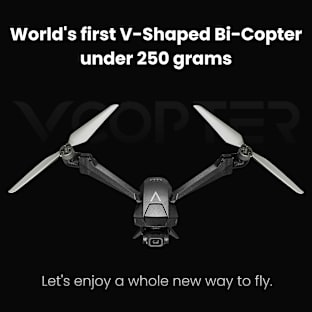Martial Arts and Budo
I love the martial arts, and I have a particular passion for
Japanese martial arts, or budo. I've been doing budo, both modern and
classical, in the US and Japan, for 30 years. Even with the internet
though, really good information on the traditions, training and
thinking in martial arts is hard to find.
After 3 decades training in the US and Japan doing Kodokan Judo,
Shinto Muso Ryu Jo, Muso Jikiden Eishin Ryu Iai and Shinto Hatakage
Ryu Iai Heiho, I've started to explore the world of martial arts
practice though in my writings. My goal with this campaign is to
publish an anthology of essays that will be be worth reading for
anyone who is interested in martial arts, whether beginning student
or seasoned veteran. I want
to help people find quality information about the martial arts.I love
budo and believe martial arts training can benefit anyone. I want to
share the beauty and power and incredible potential for development
that martial arts practice offers.
Contributing to this project will make solid, accurate information
about the martial arts available to help counter the wealth of garage
circulating on the internet. The essays provide more than just
answers. They are built around good questions to ask yourself when
exploring the martial arts and their meaning. What is the purpose of
martial arts practice? What qualities are we trying to develop in our
arts and in ourselves?
The book will include the following essays:
- Do You Have To Study In
Japan To Understand Budo
- Etiquette: Form And
Sincerity In Budo
- Sensei, Kyoshi, Hanshi,
Shihan: Budo titles and how to use them, or rather, how not to use
them
- What Is Martial Arts Rank?
- Zanshin
- Do vs. Jutsu (道対術)
- What Kata Isn't
- Trust In the Dojo
- Training, Motivation And
Counting TrainingTime In Decades Instead Of Years
- The Most Effective Martial
Art
- The Dojo As The World:
Learning To Deal With Violence And Power
- Budo And Responsibility
- Investing In Failure
- The Spirit Of Learning
- Training Hard And Training
Well Are Not The Same Thing
- When It Comes to Training,
Fast Is Slow And Slow Is Fast
- Getting Out Of The Comfort
Zone
- There Are No Advanced
Techniques
- The Most Essential
Principles In Budo: Structure
- The Most Essential
Principles In Budo 2: Spacing
- The Most Essential
Principles In Budo 3: Timing
- The Only Things I Teach
Are How To Walk And How To Breathe
- Budo Expectations And
Realities: Understanding The Limits Of What We Study
- Will Budo Training Make Me
A Better Person
- Budo Professionalism
- Budo Training And Budo
Philosophy
- How To Adapt An Art To Fit
You
- Is Kata Too Rigid And
Mechanical
+++++++++++++++++++++++++++++++++++++++
How are we going
to do this?
The
difficult part is that publishing costs money. This is where you can
help, and get something in return. First, the totals:
-
Editing.
Making a professional book requires professional editing.
Professional editing is going to run around $1,250.
-
Professional
cover. Designing book covers is not something we learn while writing
or hanging out in the dojo. I would like to have a great cover
design so you're not embarrassed to have people see you with this
great book. $500
-
Publishing
the books is the single biggest cost. To do paperback and ebook
with photographs will run about $4,500
Other Ways You Can Help
Please share this page with anyone you know who is interested in
the martial arts. I sincerely hope this book with contribute to
growing a healthy, active and knowledgeable martial arts community.
Please share this on Facebook, Twitter and other social media.
About The Author
The Budo Bum is better known as Peter Boylan He has been been training in
Japanese martial arts since 1986. He started in Kodokan Judo, where he
has attained the rank of sandan.
While living in Japan in the 1990s, he stumbled upon the classical
Japanese martial arts of Iaido and Jodo. He began practicing Muso
Jikiden Eishin Ryu Iaido with Takada Shigeo Sensei in 1993, and started
learning Shinto Hatakage Ryu Iai Heiho from Kiyama Hiroshi Sensei in
1998. He is currently focusing on Shinto Hatakage Ryu Iai Heiho. While
practicing these koryu arts, he has also trained in the Seitei Iaido of
the All Japan Kendo Federation, reaching the rank of godan (5th degree
black belt). Kiyama Sensei has licensed Peter to award certification in Shinto Muso Ryu.
In 1994 he was able to start training in Shinto Muso Ryu Jodo and the
standard jo kata of the All Japan Kendo Federation with Tatsuro
Hashimoto Sensei and Matsuda Shihan. Since then he has reached the rank
of yondan in the Kendo Federation standard jo kata. He is also the
translator of the English edition of the book “Jodo” by Yoneno Kotaro
and Hiroi Tsunetsugu. He has received the Shomokuroku license in Shinto Muso Ryu from Kaminoda Tsunemori.
After living in Japan for 6 1/2 years, he moved back to the USA in
1999. He returns to Japan at least once a year to train with his
teachers and get advanced instruction.













































